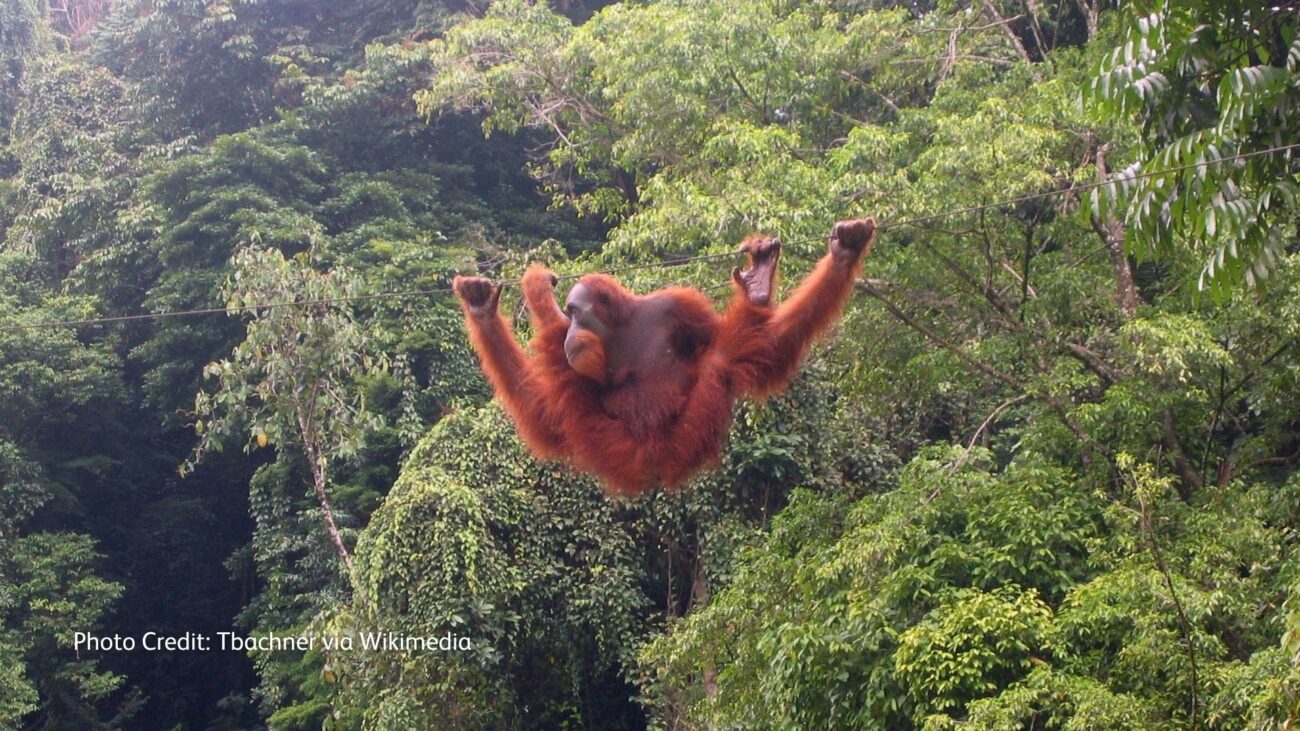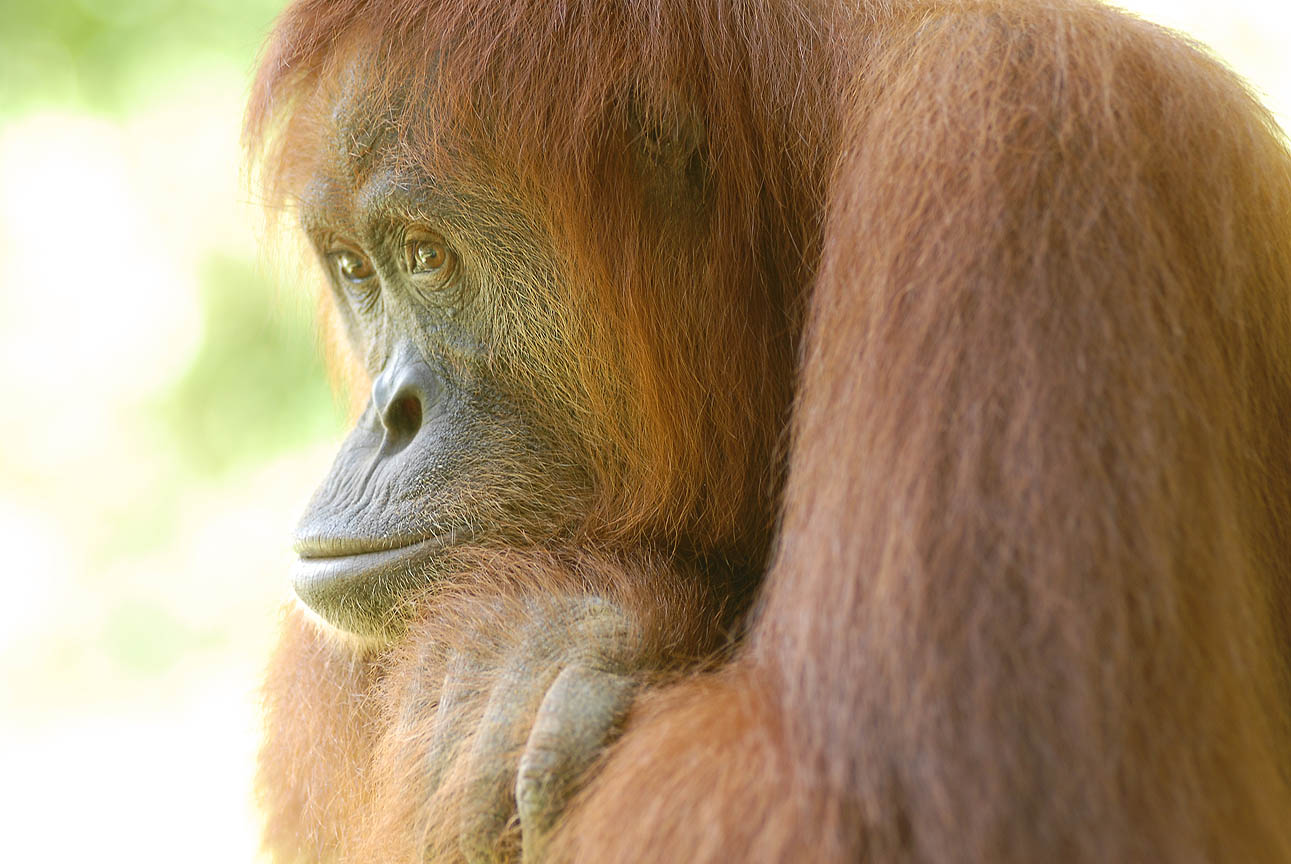
Orangutans have a distinctive way of moving through the canopy: quadrumanous scrambling. Traditional swinging (or brachiation, like gibbons) is too strenuous because of their weight, so they use all four limbs to hold onto branches and throw their weight in the direction they want to go.
This forces the branch to bend, enabling them to grab the next branch and keep moving. Orangutans are the largest tree-dwelling mammals and spend more time in the trees than any other great ape. They are perfectly built for quadrumanous scrambling.
Orangutans have long arms and legs, highly mobile hip and shoulder joints, and grasping hands and feet. They also have an incredible arm span that can span up to 2 metres (7 feet). Their incredible range of motion is partly due to a key evolutionary difference: the ligamentum teres.
In humans, the ligamentum teres helps bind the femur to the pelvis, stabilising the hip joint. This is modified in orangutans, granting them far greater hip rotation and freedom of movement. This means they can do some truly incredible poses, like putting their legs behind their heads!
You can help protect Sumatra's Orangutans. Click to get updates
